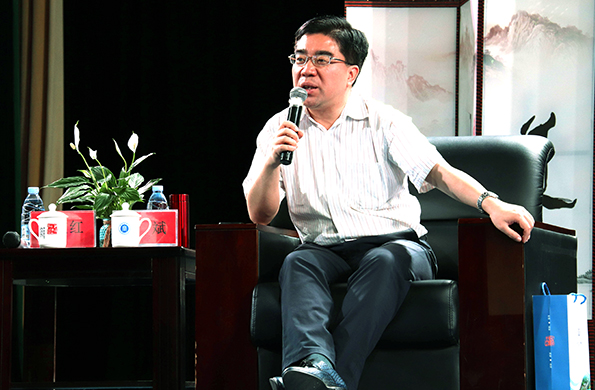High-level openness benefits China and the world
 In the keynote speech delivered at the opening ceremony of the Second Belt and Road Forum for International Cooperation, Chinese President Xi Jinping pointed out that “China’s move to open wider to the outside world is an independent choice made based on the actual needs of the country’s reform and development. It will help promote high-quality economic development, meet people’s aspirations for a better life and contribute to world peace, stability and development.” Once again the country has made a solemn commitment to the international community to continuing and expanding opening up.
In the keynote speech delivered at the opening ceremony of the Second Belt and Road Forum for International Cooperation, Chinese President Xi Jinping pointed out that “China’s move to open wider to the outside world is an independent choice made based on the actual needs of the country’s reform and development. It will help promote high-quality economic development, meet people’s aspirations for a better life and contribute to world peace, stability and development.” Once again the country has made a solemn commitment to the international community to continuing and expanding opening up.
Since “building a new system of open economy” was proposed at the 18th National Congress of the CPC and “comprehensive opening up” was put forward at the 19th National Congress of the CPC, high-level opening up has become an important approach through which China comprehensively deepens reform and realizes high-quality economic development.
High-level opening up mainly includes four aspects: the shift of the goal of openness from pursuing GDP, exports and investment to encouraging innovation and improving the business environment; the expansion of the sector of openness from commodity trade to service trade and investment; the extension of the channel of openness from one-way openness to two-way openness and multi-balance; and the extension of the area of openness from coastal regions to inland border areas.
Conceptually, high-level opening up preserves the coordination between internal and external demands, stresses the balance between imports and exports and gives equal importance to “bringing in” and “going out.” Through various forms of international communication and cooperation, it aims to establish a fair, open, competitive and orderly modern market system and a management model that is in line with international high-standard investment and trade rules.
In practice, high-level opening up has seen many breakthroughs.
For the past more than five years, over 150 countries and international organizations have signed cooperative treaties on the Belt and Road initiative with China and a large number of cooperative projects have been implemented. The initiative demonstrates China’s resolve to foster high-level regional economic cooperation.
Twelve free trade pilot zones (FTZ) have been set up in China since 2013, and the country has decided to explore policies and systems for the construction of a free trade port in Hainan Province. The institutional innovation and other exemplary models that have come from the FTZs have been copied and extended to other regions in China.
In November 2018, the first China International Import Expo was held in Shanghai. It is the world’s first national-level import expo. In the context of today’s rising anti-globalization, this expo was a declaration made by China in support of opening up and maintaining an open world economy.
China’s economic development over the last 40 years or more was achieved under the conditions of opening up. For the Chinese economy to achieve high-quality development in the future, more openness is required, and the country will adopt more major institutional and structural measures for reform and opening up.
In the past, opening up has been one of the magic keys behind the Chinese miracle, and it has allowed the world to see and appreciate what China has done. Today, high-level opening up will continue to facilitate China’s development, driving economic globalization in a more open, inclusive, balanced and universally beneficial direction.
This article was edited and translated from Guangming Daily. Sheng Bin is dean of the School of Economics at Nankai University.
edited by CHEN ALONG
